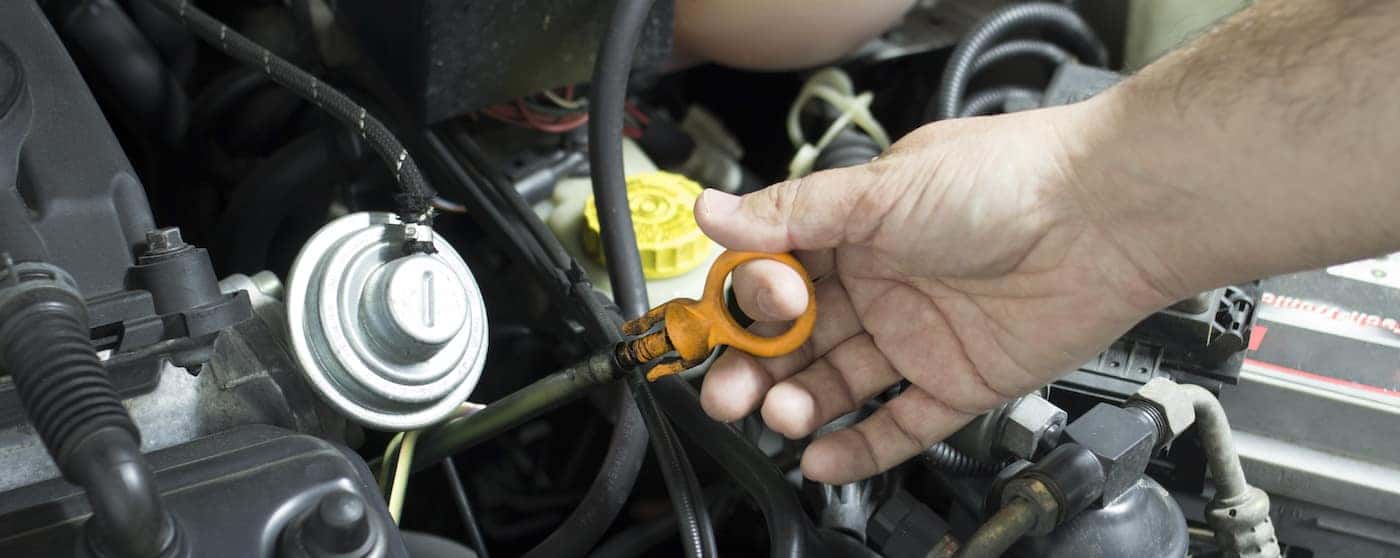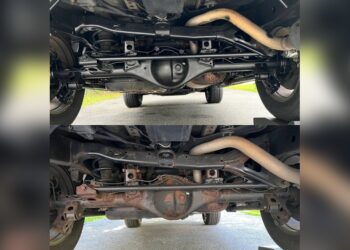Checking your BMW’s oil with a dipstick is simple and essential. It helps keep your engine running smoothly.
Knowing how to do it can save you from future problems. BMW cars are known for their performance and luxury. Keeping the engine in top shape is crucial. Regular oil checks ensure your engine stays healthy. Not all BMW models have traditional dipsticks.
But for those that do, it’s a quick process. Understanding how to use a dipstick can prevent engine issues. It can also extend your car’s lifespan. This guide will teach you the steps to check your BMW’s oil using a dipstick. You’ll learn what to look for and how to interpret the results. With this knowledge, you can maintain your BMW with confidence.
Introduction To Bmw Oil Maintenance
Maintaining your BMW’s oil is crucial for its performance and longevity. Oil acts as the lifeblood of your vehicle, ensuring all moving parts are lubricated and functioning smoothly. Ignoring oil maintenance can lead to engine damage and costly repairs. A simple habit of checking your oil levels can save you time and money. But how do you ensure your BMW is getting the care it deserves? Let’s dive in.
Importance Of Regular Oil Checks
Regular oil checks are vital. They help you catch potential issues early. Imagine driving on a long road trip and suddenly your engine light flashes. Regular checks can prevent such surprises. They ensure your engine is running efficiently, keeping your BMW in top shape. Checking oil levels frequently can prevent unnecessary wear and tear. Isn’t it better to spend a few minutes checking than hundreds of dollars fixing?
Benefits Of Using A Dipstick
Using a dipstick is a straightforward way to check your oil. It’s quick, efficient, and gives you instant feedback. A dipstick provides a clear indication of oil levels and condition. You don’t need fancy tools or gadgets; just pop the hood and pull it out. Plus, it’s a skill you can easily master, enhancing your car maintenance knowledge. Ever tried using a dipstick? It’s simpler than you think and incredibly effective.
Taking care of your BMW doesn’t have to be complicated. With regular checks and a trusty dipstick, you can ensure your vehicle remains reliable and powerful. Ready to give your BMW the attention it deserves?
Locating The Dipstick
Checking your BMW’s oil level regularly is crucial for engine health. To do this, you need to locate the dipstick. This guide will help you find the dipstick in your BMW and understand its types.
Finding The Dipstick In Your Bmw
Most BMW models have a dipstick near the engine. Open the hood and find the engine block. Look for a slender handle or loop. It’s usually yellow or orange. This is the dipstick handle. Some newer models may not have a traditional dipstick. They use electronic sensors instead.
If your BMW has a dipstick, it’s often on the driver’s side. Check the side of the engine. The dipstick is usually in plain sight. If you can’t find it, consult your owner’s manual. It has detailed diagrams to help you locate it.
Understanding Dipstick Types
BMWs come with different types of dipsticks. Traditional dipsticks are long metal rods. They have markings to show oil levels. You pull them out to check the oil. Clean the dipstick first, then reinsert it. Pull it out again to read the oil level.
Some BMWs have electronic oil sensors. These provide digital readings on the dashboard. No manual checking needed. These sensors are convenient. But it’s good to know how to check manually. It ensures accuracy.
Whether manual or electronic, knowing your dipstick type is vital. It helps you maintain proper oil levels. Keep your engine running smoothly.
Preparing Your Vehicle
Checking oil in a BMW with a dipstick is simple. First, ensure the car is cool and parked. Pull out the dipstick, wipe it clean, then reinsert it fully. Remove again to inspect the oil level between the markings.
Checking the oil in your BMW is a simple yet essential task to ensure your vehicle runs smoothly. Before diving into the process, it’s crucial to prepare your vehicle properly. This preparation will ensure you get an accurate reading and avoid any potential mishaps.Engine Temperature Considerations
The temperature of your engine matters when checking the oil. Ensure your engine is warm but not hot. A warm engine allows the oil to circulate properly, giving you an accurate measurement. Wait a few minutes after turning off the engine to allow the oil to settle. This brief pause ensures the oil is not too hot and reduces the risk of burns. Warm engines also help the oil to drain back into the pan, ensuring you get a precise reading.Parking And Level Ground
Always park your BMW on a level surface before checking the oil. This prevents the oil from pooling at one side of the pan, which could lead to a false reading. Imagine checking the oil on a steep hill; the oil would shift, making the dipstick reading inaccurate. A flat surface ensures that the oil is evenly distributed within the engine. If you’re unsure about the levelness of your parking area, use a small ball and see if it rolls. If it stays in place, you’re good to go. Remember, accuracy in reading translates to better engine health. Have you ever thought about how a simple incline could mislead your maintenance efforts? Paying attention to these small details can prevent bigger issues down the road.Step-by-step Oil Checking Process
Checking the oil in your BMW is a simple yet crucial maintenance task that ensures your engine runs smoothly. Whether you’re a seasoned car enthusiast or a beginner, knowing how to check your oil with a dipstick can save you from costly repairs. Let’s walk through the step-by-step process to keep your BMW in top shape.
Removing The Dipstick
Begin by ensuring your BMW is parked on a level surface. This guarantees an accurate reading. Open the hood and locate the dipstick, usually marked in bright colors for easy identification.
Firmly grasp the dipstick handle and pull it straight out of the engine. Be gentle to avoid any unnecessary force that might damage the dipstick or surrounding components.
Cleaning The Dipstick
Once removed, you might notice oil residue on the dipstick. Use a clean, lint-free cloth or paper towel to wipe the dipstick thoroughly. This step is vital for obtaining a precise oil level reading.
Cleaning off the old oil ensures that the new measurement reflects your current oil status, not a mix of old and new readings.
Why is cleaning the dipstick important? It helps you see the true oil level without interference. Have you ever checked your oil and been uncertain? A clean dipstick can eliminate any guesswork.
Reinsert the dipstick back into its tube completely, then pull it out again. This second reading will show the oil level against the marked indicators on the dipstick.
Following these steps not only gives peace of mind but also extends the life of your engine. You wouldn’t want to risk poor engine performance just because of a simple oversight, right?
Checking your BMW’s oil may seem straightforward, but attention to these details can make all the difference. Have you tried this method before? What were your results? Share in the comments below and let’s keep our engines running like new!
Reading Oil Levels
Checking oil levels in a BMW requires using the dipstick. First, ensure the engine is cool and the car is on level ground. Pull out the dipstick, wipe it clean, then reinsert and remove it again. Examine the markings to determine oil level.
Checking your BMW’s oil level is crucial for maintaining engine health. Proper oil levels ensure your engine runs smoothly and efficiently. Knowing how to read your dipstick correctly can save you from potential engine trouble. Let’s dive into understanding those dipstick markings and what they mean for your car’s performance.Interpreting The Dipstick Markings
When you pull out your dipstick, you’ll notice a series of markings. These aren’t just random lines; they’re your guide to understanding your engine’s oil status. Look closely at the end of the dipstick. You’ll find two primary indicators: the ‘minimum’ and ‘maximum’ marks. The oil level should ideally be between these two. If you’ve ever wondered what those crosshatch patterns or small holes are, they help in gauging the oil’s condition. Clean oil will leave a clear mark, while dirty oil may appear dark and sticky.What Different Levels Indicate
So, what does it mean if your oil level is below the minimum mark? It suggests you might need to add oil soon to avoid any engine damage. Running on low oil can lead to overheating and increased wear on engine parts. If the oil level is above the maximum mark, it could indicate overfilling. This might seem harmless, but too much oil can cause excessive pressure and damage seals. Ever noticed how the oil level fluctuates? Checking oil when the engine is hot might show a different level compared to when it’s cold. Always wait a few minutes after turning off the engine before you check the oil. Are you checking your oil regularly? You should. It’s a simple task that can prevent costly repairs and ensure your BMW runs smoothly.
Credit: bimmer-motors.com
Troubleshooting Common Issues
Checking BMW oil with a dipstick involves pulling it out, wiping clean, reinserting, and checking the level marked. Ensuring the car is cool before checking prevents inaccurate readings. Regular checks help maintain engine health and performance.
Checking your BMW’s oil using the dipstick is a straightforward process, but what happens when things don’t look quite right? Troubleshooting common issues can save you a lot of headaches and potential repair costs. From low oil levels to changes in oil color and consistency, each issue tells a story about your engine’s health. Understanding these signs can empower you to take timely action, ensuring your BMW runs smoothly and efficiently.Low Oil Levels
Discovering low oil levels can be alarming, but it’s a relatively common issue. A dipstick reading below the minimum mark means your engine might not be getting the lubrication it needs. You might notice a warning light on your dashboard, or hear unusual engine noises. These are signs that you should add oil immediately. Ignoring low oil levels can lead to engine damage. Always keep a bottle of your preferred oil in the trunk for emergencies.Oil Color And Consistency
The color and consistency of your oil can reveal much about your engine’s condition. Fresh oil is typically amber and smooth, while dark and gritty oil may indicate contamination or wear. If your oil appears milky or foamy, it could be a sign of coolant mixing with the oil, often due to a leaking head gasket. This requires immediate attention. Regularly checking the oil’s appearance can prevent costly repairs. Make it a habit to inspect it during your routine maintenance. Have you ever noticed an unexpected change in your oil’s appearance? What did it mean for your BMW? Share your insights in the comments! Understanding these subtleties can keep your ride smooth and your wallet happy.Maintaining Optimal Oil Levels
Checking your BMW’s oil level with a dipstick is simple. Locate the dipstick, pull it out, and wipe it clean. Insert it back, pull it out again, and observe the oil level. Keep oil between the minimum and maximum marks for optimal engine performance.
Maintaining optimal oil levels in your BMW is crucial for its performance and longevity. The engine relies on oil for smooth operation and to prevent wear and tear. Regularly checking and maintaining the right oil level ensures your car runs efficiently, saving you from costly repairs down the road. ###When To Add Oil
Checking your oil level should be part of your routine car maintenance. Make it a habit to check the oil every month or before long trips. If the oil level is below the recommended mark on the dipstick, it’s time to add more. You might wonder why oil levels drop. Often, it’s due to natural consumption or minor leaks. Keep an eye out for any warning lights on your dashboard, as they can signal low oil levels. ###Choosing The Right Oil For Your Bmw
Using the correct oil type is vital for your BMW’s engine health. Consult your owner’s manual to find the manufacturer’s recommended oil grade. BMW engines are designed to perform best with specific oil types, usually synthetic oils. Consider the climate you drive in. If you’re in a colder region, a low-viscosity oil may be more suitable, allowing the engine to start smoothly. Conversely, in hotter climates, a higher viscosity oil might be preferable. Choosing the right oil isn’t just about following recommendations; it’s also about understanding your driving habits. Do you often drive in stop-and-go traffic, or do you enjoy weekend road trips? These factors should influence your choice of oil.
Credit: www.unitedbmw.com
Conclusion And Next Steps
Checking BMW oil with a dipstick ensures engine health. Insert the dipstick and pull it out to read oil level. Regular checks help prevent engine damage and maintain performance.
Concluding your journey of checking your BMW oil with a dipstick, you’ve gained a valuable skill that ensures your vehicle runs smoothly. This simple yet crucial maintenance task helps extend the life of your engine. It’s an empowering step towards being more connected with your car’s health.Routine Checks
Regularly checking your oil is as important as filling up your gas tank. Make it a habit to check your oil once a month. Use a reminder on your phone or calendar to keep this task top of mind. Think about the benefits: catching issues early can save you costly repairs down the line. Plus, it gives you peace of mind knowing your engine is well-lubricated. Consider sharing this knowledge with friends or family. You might inspire someone else to take charge of their car maintenance.Professional Assistance
Even with regular checks, there will be times when you need professional help. If you notice strange sounds or the oil looks dirty despite recent changes, it’s time to consult a mechanic. Professionals can perform thorough inspections and catch problems that might not be visible to the untrained eye. They can also guide you on the best oil for your BMW, ensuring optimal performance. Remember, asking for assistance is a smart move, not a sign of inexperience. You’re investing in your car’s health and your safety. Are you ready to take your car maintenance to the next level? Regular checks and knowing when to seek help make you a proactive car owner.
Credit: www.bmwofturnersville.com
Frequently Asked Questions
How Do You Read A Bmw Oil Dipstick?
Check BMW oil dipstick by removing it, wiping clean, reinserting, then pulling out to read oil level. Ensure level is between minimum and maximum marks. Maintain proper oil level for engine health. Check regularly for accurate readings.
How To Tell If A Bmw Has Too Much Oil?
Check the BMW’s oil level using the dipstick. Oil above the ‘maximum’ mark indicates excess. Look for blue smoke from the exhaust, which signals too much oil. Overfilling can cause engine issues or leaks. Ensure regular checks and adjustments for optimal performance.
Does Bmw Tell You When The Oil Is Low?
Yes, BMW vehicles alert you when the oil level is low. A dashboard warning light or message appears. Regularly check oil levels to ensure engine health. Modern BMWs may have sensors to monitor oil status. Always refer to your BMW’s manual for specific instructions.
How To Check Bmw Oil Level Without Dipstick?
Use the iDrive system to check the oil level. Navigate to “Vehicle Status” and select “Engine Oil Level. ” Ensure the car is on a level surface and the engine is warm but turned off. The system will display the current oil level.
How Do I Find The Dipstick In A Bmw?
Look for a yellow or orange handle. It’s usually near the engine.
Conclusion
Checking your BMW’s oil level with a dipstick is simple. It keeps your engine healthy and running smoothly. Regular checks prevent costly repairs and extend engine life. Always follow the steps carefully for accurate results. A clean dipstick gives clear readings.
Ensure your car is on level ground when checking oil. Understand the importance of maintaining proper oil levels. It ensures your BMW runs efficiently. Remember, consistent checks are key. Make it a habit. Your car will thank you. Keep it simple and stay proactive.
Enjoy a smoother driving experience.

















